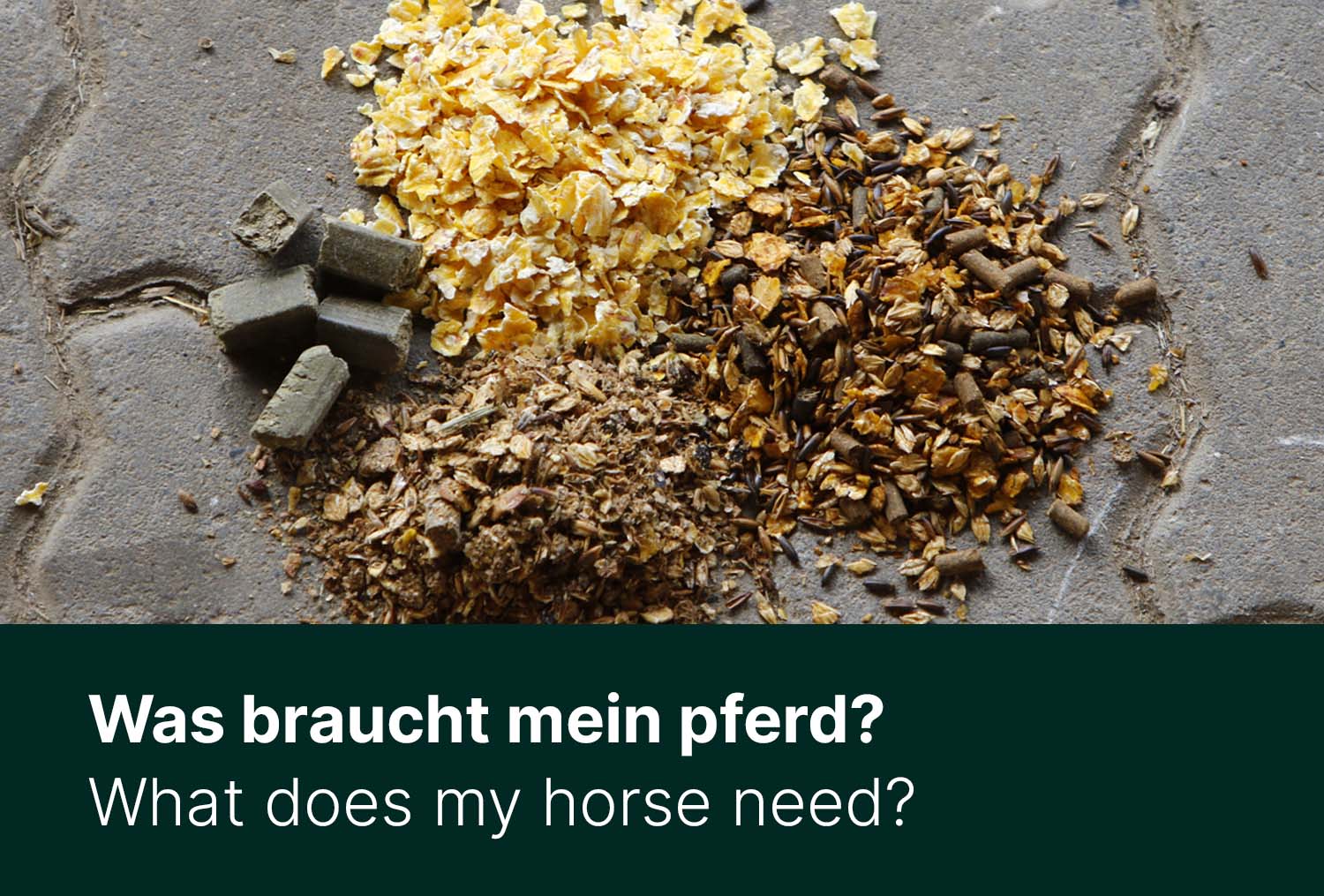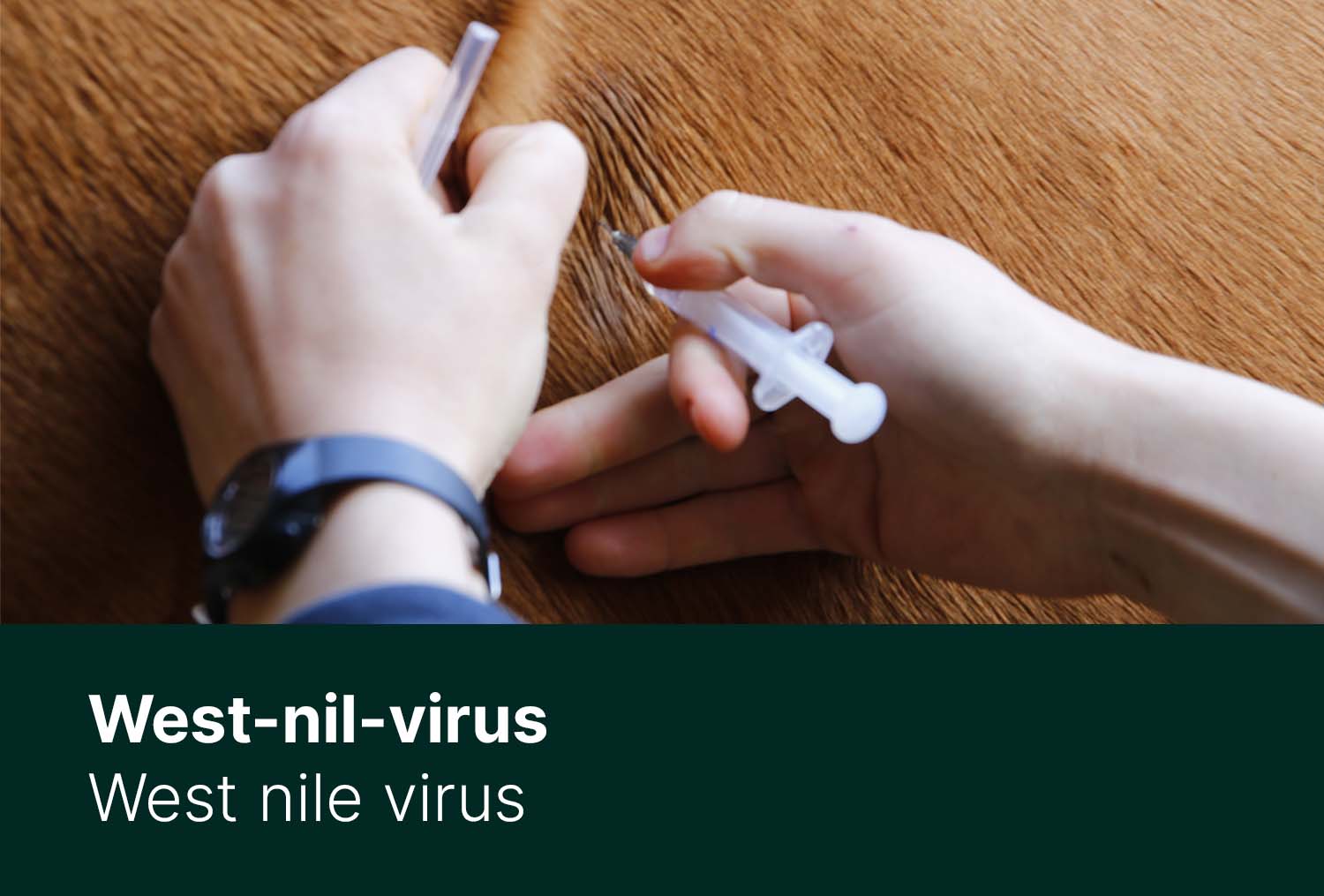We have put together the most important basics for you so that your horse can enjoy the grazing season safe and sound.
I. The Acclimation
In most stables, the pastures and meadows are closed during the winter months. The feed of the horses is mostly limited to straw and hay. Juicy feed is usually limited to apples and carrots. With the time change, the time of slowly going back onto the gazing lands starts as well. In contrast to their conspecifics, who are kept on pasture all year round, these horses must be carefully accustomed to the fresh grass. The change from pure hay and straw to fresh pasture grass is from a nutritional point of view a critical moment since the entire organism and digestive tract of the horses must first get used to this. The intestinal bacteria, which ensure the digestion of grass, are usually so decimated over the winter that a gentle accustomization is essential for the health of the horse.


II. Transitioning into the Grazing Period
Especially during the transition from stable or paddock keeping to the grazing period, feeding errors are committed and problems in the digestive tract of horses arise. The colon system does not tolerate sudden food changes and relies on structured crude fiber. A lack of crude fiber can lead to false fermentation in the colon, resulting in the worst case scenario with the death of the large intestinal flora - laminitis is the result. What used to be only a surplus of protein is now associated with a low crude fiber content, a high content of carbohydrates and a high amount of fructan.
III. Starting the Grazing Period with Caution
The fructan content is particularly high at the beginning of grass growth (April / May) and also at the end (September / October). This is partly due to the fact that the content increases at low temperatures and partly because the grass is still very short and the horses absorb a larger amount of fructan in smaller amounts of grass. The rule of thumb is, to begin with the grazing once the grass has grown about 20cm high. But also the time of day plays a crucial role: Since the nights are still quite cool at the beginning of the grazing season, the fructan content in the morning is also significantly higher. For this reason, the first days of feeding should be started at noon and gradually increased until even short intervals in the mornings are included. This allows the horse to get used to the increased fructan, protein and carbohydrate amounts without doing harm. Normally, the transition should take place over three to four weeks to make it as comfortable as possible for the horse. Most horses are very lustful for the fresh green in the spring and they are usually not thrilled when they are picked up from the pasture after only 20 minutes, but it is an important measure to not endanger at-risk breeds and specific horse types. A predefined plan, which clearly indicates the time of day and time interval can be helpful:
|
Day |
Daytime |
Time Interval |
|
1 - 2 |
At Lunchtime |
15-20 Minutes |
|
3 - 5 |
At Lunchtime |
30 Minutes |
|
6 - 8 |
At Lunchtime |
45 Minutes |
|
9 - 11 |
Noon / Afternoon |
60 Minutes |
|
12 - 14 |
In The Morning |
20 Minutes |
|
|
Noon / Afternoon |
1 ½ Hours |
|
15 - 17 |
In The Morning |
30 – 45 Minutes |
|
|
Noon / Afternoon |
2 Hours |
|
18 - 21 |
In The Morning |
1 – 1 ½ Hours |
|
|
Noon / Afternoon |
3 Hours |
|
From The Fourth Week |
Full-Time |
4 Hours (Extend Daily) |
Tip: The first grazing is usually done with the horse on the hand. However, since most horse owners have no desire to graze their horse for 45 minutes or more by hand, you can also do it together with others and let the horses graze together in the meadow. Here, a common parking meter can be hung on the pasture gate, where the 'arrival time' of horses is noted. The individual horse owners can now read off exactly since when their own horse is on the lawn and if necessary, bring back inside when the time comes.
Help with Sensitive Horses - Prevent Excrement Water, Diarrhea, and Colic
For many horses, the beginning of the grazing season is a huge change, which usually affects the digestive tract. Consequences of a fast change in nutrition can be expressed quickly through diarrhea or excrement water. A special supplementary feed can be offered as support for the sensitive gastrointestinal tract of the horses. These are usually a collection of different herbs that have a positive effect on the digestive tract. Certain yeast cultures can also positively influence bacterial growth in the intestine, which in turn promotes better digestion of the grass. To prevent the horse from being too greedy during the first few days of grazing a feeding with hay and straw prior to the grazing-time is recommended.


IV. Risk Breeds and Horse Types
In principle, any horse can suffer from laminitis or other metabolic diseases, which are caused by an excessive intake of fructan, carbohydrates, and protein. However, some breeds and types are more vulnerable than others. Thoroughbreds and warm-blooded animals usually have no or only a few problems with the feeding conversion during the grazing period. Horse breeds, however, which are used to a meager vegetation by evolution, must be cautiously grazed. These risk breeds include, for example, Icelanders and Paso Finos. Another aspect is the weight: For example, an overweight pony has an increased risk potential for metabolic diseases. Useful in such cases is limited access to pastures or going with an eating break. Also, the time of day is crucial: Horses at risk should only be brought to pasture during noon, as at this time the fructan content is lowest. Another factor is the sufficient movement: The absorbed sugar is converted into energy, which should be degraded in the best case in the form of movement. Especially endangered horses and ponies should be sufficiently moved during the grazing season.
- Tips for the optimal grazing:
- Slowly get the horses used to the fresh grass and gradually increase the time span
- Feed horses prior to going to the pasture
- Avoid the morning hours, as at this time the fructan content is highest
- Ensure sufficient minerals
- Warm up the horses prior to their first free grazing
- Provide enough fresh water








Riding Pleasure Instead of Winter Frustration - Part 2
Riding Safely in Traffic